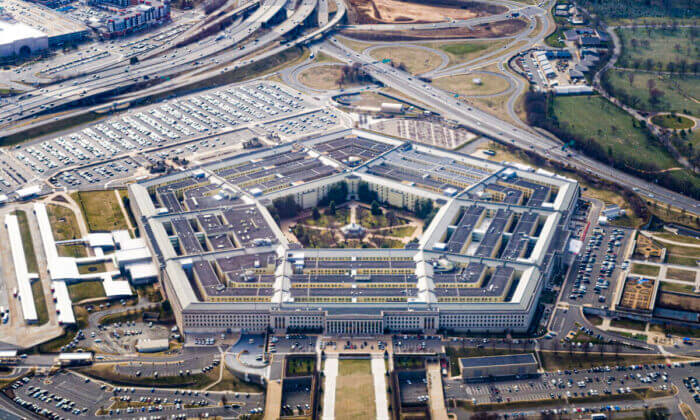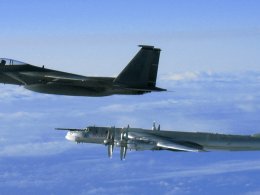“There’s a huge gap between what the national defense strategy requires that the Navy, the Air Force, the Army, and the Marine Corps [provide] and what they can actually provide today,” said Mark Gunzinger, director of future concepts and capability assessments at the Mitchell Institute for Aerospace Studies. “That’s the product of three decades worth of force cuts and delayed modernization.”
To make up for that fact and to prepare for a possible conflict with China, the United States may need to consider increasing its use of cheaper, unmanned systems in an effort to augment its more expensive assets, Gunzinger said. Particularly so, given that U.S. officials have warned that China’s communist regime could launch an invasion of Taiwan by 2027.
“How do you make up that gap and in the time frame we’re talking about?” he said. “A big part of the answer in unmanned systems.”
Gunzinger delivered the remarks during a July 12 roundtable on the issue of U.S. air and naval forces development hosted by the Hudson Institute, a conservative think tank.
The group of experts discussed how unmanned systems could boost the survivability and warfighting capacity of U.S. military units in the Pacific, even as the military contends with sluggish readiness levels.
One such sign of dwindling military readiness discussed is a decade-long decrease in mission-capable systems, a trend most pronounced in the Navy and Marine Corps, which would be responsible for most of the fighting in the event of a conflict with China.
In perhaps the most jarring example of decreasing readiness, roughly 50 percent of the military’s F-18 Super Hornet fighter jets were considered to not be mission capable, according to Diana Maurer, director of defense capabilities and management at the Government Accountability Office.
“When half of your aircraft are not able to get up in the air to perform a single mission, that really blunts the ability to carry out some of the operations that the Navy and others would like to perform,” she said. “That’s a concern.”
Maurer said there were similar concerns with a number of vessels typically used to launch such aircraft and that the backlog and delays for routine maintenance on naval vessels were negatively affecting the military in profound ways.
To that end, she said the various service branches would need to do more to overcome “institutional bias” and integrate with one another in order to be capable of seizing the advantage in a Pacific conflict.
“They’re going to have to work together in a much more integrated, much more seamless way to make that possible,” Maurer said.
Overall, the United States would need to do much to regain the high ground against China in the Pacific, according to Bryan Clark, a senior fellow at the Hudson Institute.
“The main challenge we’re facing is the missile threat posed by China,” Clark said. “Fundamentally, China has the ability to reach out thousands of miles away from its coast and threaten carrier strike groups … with a large number of precision strike weapons.”
As such, he said, U.S. forces would likely need to operate in a highly constrained environment, 1,000 to 1,500 nautical miles away from the Chinese coastline in order to be effective. Even then, however, it would face its biggest challenge in Chinese aircraft with large salvos of cruise missiles and bombs.
Clark and his Hudson Institute colleague, Timothy Walton, co-authored a report (pdf) on the issue earlier in the year. In that document, they made the case that the Navy and Marine Corps should opt to field more F-18s and fewer costly F-35s.
The F-35’s operational advantages would be effectively nullified given the distance they would have to be stationed away from Chinese forces, the authors said. The United States could make up the difference much more efficiently through distributed counter-air operations that relied on more drones and layered short-range air defenses, they said.
Such may not be the direction the Navy has in mind, however.
“Our engagement with the Navy showed that they were thinking of getting longer-range weapons to try to deal with the challenge,” Clark said. “Fundamentally, they’re constrained by the fact that their future attack aircraft portfolio is F-35s and F-18s, they don’t have a more penetrating aircraft on the horizon.”
To that end, Clark said physically larger missiles also meant reducing salvo sizes and that the strategy might not be affordable at scale. As such, his and Walton’s report suggested overhauling U.S. aircraft carriers to focus solely on strike capabilities while transferring other operation capacities to land and space assets.










